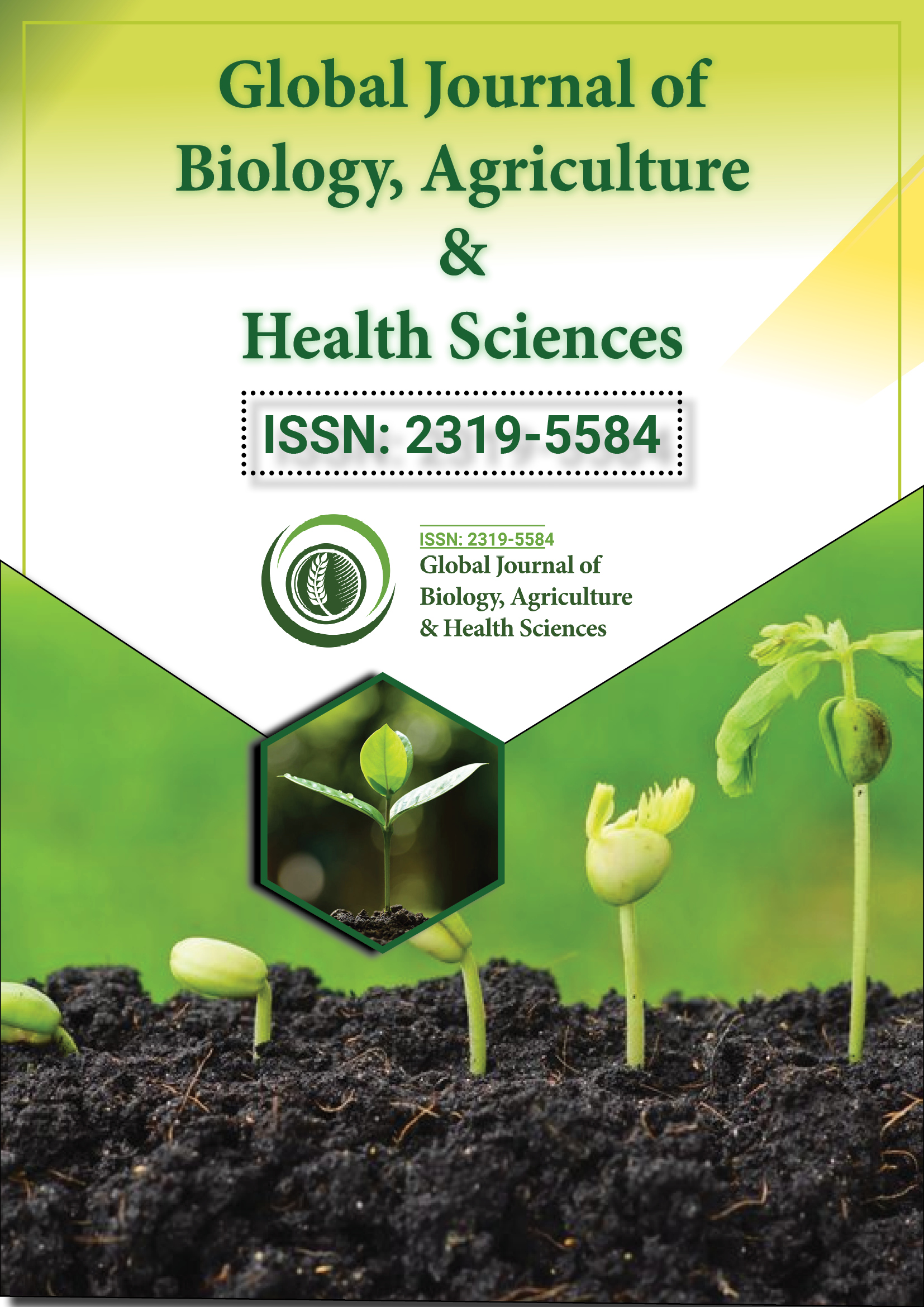Indexed In
- Euro Pub
- Google Scholar
Useful Links
Share This Page
Journal Flyer

Open Access Journals
- Agri and Aquaculture
- Biochemistry
- Bioinformatics & Systems Biology
- Business & Management
- Chemistry
- Clinical Sciences
- Engineering
- Food & Nutrition
- General Science
- Genetics & Molecular Biology
- Immunology & Microbiology
- Medical Sciences
- Neuroscience & Psychology
- Nursing & Health Care
- Pharmaceutical Sciences
Opinion Article - (2025) Volume 14, Issue 2
Vector-Borne Plant Diseases and Their Impact on Crop Yield Stability
Fatima Amin*Received: 26-May-2025, Manuscript No. GJHABS-25-29935 ; Editor assigned: 28-May-2025, Pre QC No. GJHABS-25-29935 (PQ); Reviewed: 11-Jun-2025, QC No. GJHABS-25-29935 ; Revised: 18-Jun-2025, Manuscript No. GJHABS-25-29935 (R); Published: 25-Jun-2025, DOI: 10.35248/2319-5584.25.14.257
Description
Agricultural productivity relies heavily on the health of crop plants. One major threat to stable yields arises from plant diseases spread by vectors organisms that carry pathogens from one plant to another. These diseases, often transmitted by insects such as aphids, whiteflies, beetles, or leafhoppers, can infect crops rapidly and lead to considerable losses, especially in monoculture systems where the same plant species is grown across large areas.
Vector-borne diseases can be caused by bacteria, viruses, fungi, or phytoplasmas. Unlike contact-transmitted diseases, vector-borne ones often spread silently at first, as infected vectors may carry pathogens across great distances without detection. The insect vectors themselves may feed on many plants in succession, infecting each one they visit. This form of spread is especially difficult to control because it depends not only on the pathogen’s biology but also on the behavior, ecology, and population dynamics of the vector species.
An example of such a disease is Tomato Yellow Leaf Curl Virus (TYLCV), which is transmitted by the whitefly Bemisia tabaci. Infected plants show leaf curling, stunted growth, and reduced fruit production. Whiteflies reproduce quickly under warm conditions and can move over short distances via wind, making outbreaks rapid and hard to predict. Another notable case is Citrus Greening Disease, spread by the Asian citrus psyllid. It has devastated citrus production in several regions, rendering entire groves unproductive within a few years of infection.
The interaction between vectors and pathogens is complex. In some cases, vectors are only carriers, with the pathogen remaining on their mouthparts for brief periods. In others, the pathogen circulates inside the vector and requires a latency period before it becomes transmissible, which means control measures must target both stages. Furthermore, some vectors feed preferentially on infected plants, thereby reinforcing disease cycles. This selective behavior is shaped by chemical signals emitted by plants, which attract or repel insect vectors.
Climate influences vector behavior and disease incidence. Warmer temperatures accelerate insect development and reproduction, expanding the range of many vector species. Changes in rainfall patterns can alter vector habitats, favoring outbreaks in previously unaffected areas. In temperate zones, warming trends are increasing the survival rate of vectors through winter, leading to early spring emergence and prolonged transmission seasons. These dynamics require farmers and agricultural agencies to update disease risk assessments regularly.
Management strategies against vector-borne diseases are multifaceted. Chemical pesticides have been widely used to suppress vector populations, but overuse leads to resistance, environmental damage, and health concerns. Moreover, chemical control may not prevent disease transmission if vectors infect plants before the chemicals take effect. Therefore, Integrated Pest Management (IPM) strategies are preferred. These include biological control using natural enemies like parasitoid wasps, cultural practices such as crop rotation and intercropping, and the use of physical barriers like insect-proof nets.
Breeding for resistance also plays an important role. Some crop varieties possess traits that make them less attractive to vectors or less susceptible to infection. These traits may include thicker leaf cuticles, altered leaf surface chemistry, or changes in plant architecture. However, breeding efforts must keep pace with the evolving nature of both pathogens and vectors. Pathogens may evolve to overcome plant defenses, and vector behavior may shift in response to changes in host availability or landscape structure.
Conclusion
Early detection and surveillance are vital. Monitoring vector populations using sticky traps, pheromone lures, or visual inspection helps estimate risk levels. Remote sensing technologies and machine learning are now being used to detect symptoms of vector-borne diseases over large areas. Once detected, localized control can be implemented to contain outbreaks. Vector borne plant diseases represent a persistent and evolving threat to crop yield stability. Their management demands a combination ofCitation: Amin F (2025). Improving Agricultural Output Through Advanced Crop Science Research. Glob J Agric Health Sci. 14:257.
Copyright: © 2025 Amin F. This is an open-access article distributed under the terms of the Creative Commons Attribution License, which permits unrestricted use, distribution and reproduction in any medium, provided the original author and source are credited.

